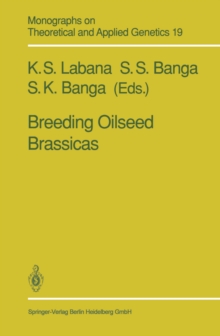
Tree Breeding: Principles and Strategies : Principles and Strategies PDF
by G. Namkoong, H. C. Kang, J. S. Brouard
Part of the Monographs on Theoretical and Applied Genetics series
Description
It has become apparent, during discussions with students and colleagues in forest genetics, that a universal concern is the achievement of diverse goals of forestry from fiber production in industrial as well as farm forests to conserving forest ecosystems.
Although we generally have several breeding methods available and several species to breed, we seek to satisfy multiple-use goals on diverse sites by management techniques that at best can only partially control edaphic environmental variation.
The dominant approach, which was agriculturally motivated, has involved inten- sive effort with complicated breeding plans on single species for uniform adaptability and single-product plantations.
However, this is obviously neither the only, nor necessarily the best, solution for the genetic management of tree species, and thus our intent in this volume is to develop ways to achieve multiple objectives in tree breeding.
We include an array of breeding plans from simple iterated designs to sets of multiple populations capable of using gene actions for different traits in different environments for uncertain futures.
The presentation is organized around the development of breeding from single-to multiple-option plans, from single to multiple traits, from single to mUltiple environ- ments, and from single to multiple populations.
However, it is not a complete "How To" book, and includes neither exercises nor instructions on data handling.
It also does not include discussion of all modes of reproduction and inheritance encountered in plants.
Information
-
Download - Immediately Available
- Format:PDF
- Publisher:Springer New York
- Publication Date:06/12/2012
- Category:
- ISBN:9781461238928
Other Formats
- Paperback / softback from £44.99
Information
-
Download - Immediately Available
- Format:PDF
- Publisher:Springer New York
- Publication Date:06/12/2012
- Category:
- ISBN:9781461238928










